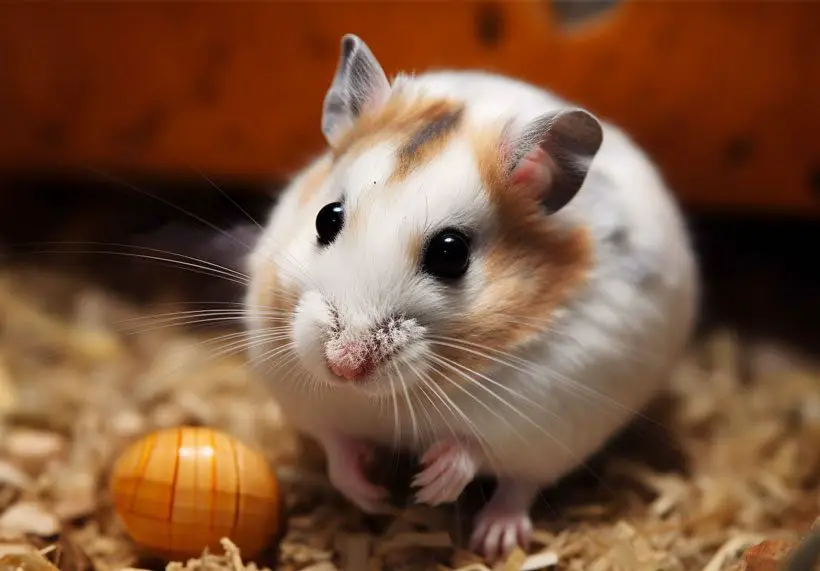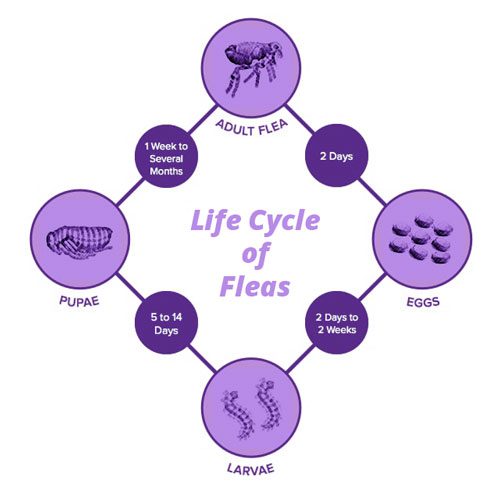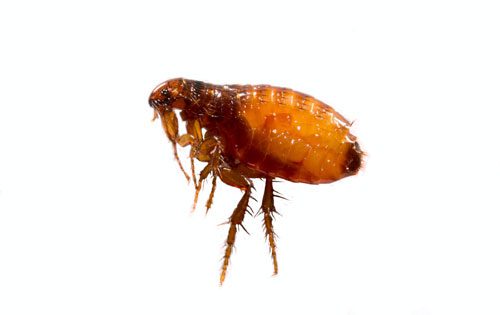Can a Hamster Get Fleas? How to Get Rid of Them?
Fleas will live and breed on any warm-blooded animal they can find. So it’s common to see flea infections with pets that often go outside, such as dogs and cats. Hamsters, unlike outdoor pets, like to live much of their lives inside cages. Hence, the misconception is they can’t get infected with fleas.
Can a hamster get fleas? Yes. Although the chances of this happening are low, hamsters still get affected by fleas. You can detect fleas by checking underneath a hamster’s fur using a brush or your fingers. See if the skin is dark or if there are any tiny feces-like dots. If they do, it’s a sure sign of a flea attack.
In this guide, we’ll see why and how a hamster could get infected with fleas and a few ways to effectively remove fleas and prevent their infestation.
Can a Hamster Get Fleas?
Yes.
Although it’s not that common to see hamsters getting infected with fleas, it’s not completely rare. Even if you keep your hamsters safe, they can still come into contact with a flea in various other ways.
For example: if you have other pets, they can come in contact with a flea, and the flea might move from that pet to your pet hamster. Or there could be a flea infestation somewhere in your house and fleas can jump from there to your hamster. There are many possible ways for a flea infestation.

Fleas feed on the host’s blood. Since hamsters are small animals without much blood in them, a flea contagion left untreated for a long time can become dangerous.
However, rest assured because they’re not that dangerous, at least in the initial state of contact. If treated at the right time, the cure can be quick.
Fleas vs Mites
Fleas are a type of parasite that some people confuse with mites. Though both of these are parasites, they are clearly distinguishable. Some mite species, such as dust mites, are so small that they can’t be seen with bare eyes, while fleas can be seen.
Fleas live by sucking blood from any warm-blooded animal. They’ll find the right host and live and breed on them. Hamsters usually get contacted with common fleas that typically affect dogs and cats. So the cure is kind of similar for all these animals.
Life Cycle of Fleas
Once a flea comes into your house, it’ll find a host to live on. If it can’t find a living host, it’ll settle down on your carpet, bed or any fibrous surface.

A flea can live for 2-3 months. And in this timespan, it can lay several thousands of eggs to increase its population. The eggs, if given a good environment, can take anywhere from a week to 10 days to hatch.
How To Detect Fleas on Your Hamsters?
Detecting fleas isn’t that complicated. Fleas can jump fast, so chances are that they’ll hide before you get close to your hamster. In that case,

- Check your hamster’s body for tiny flea feces (dots). The feces look like specs of dirt and is a clear sign of a flea attack. If your hamster has light-colored skin, it’d be easiest to check for flea dirt.
- If the skin is dark colored or the hamster has long furs, with the help of a fine tooth comb, you can brush the furs and check for the specs.
- Another major sign of detecting fleas is noticing your hamster losing some of its hair. Patches of hair loss here and there are telltale signs.
- Skin discoloration at hair loss spots is another sign of a flea attack.
- If the fleas get inside the hamster’s ears, it’ll shake its head continuously.
- Moreover, fleas drink blood and drain the hamster’s energy. If you notice that your hamster has lost some of its playfulness, check its fur for a possible flea infection.
Getting Rid Of Fleas
If your hamster gets a flea infection, you can follow up with a few steps to get rid of fleas.

Step 1: Get rid of fleas on your hamsters
- First, get a flea comb. It’s a densely-toothed comb that’ll allow you to take all the flea and flea dirt out of your hamster’s skin.
The process is simple: all you have to do is brush the hamster thoroughly and remove all the fleas, eggs and specs. Doing this repeatedly for a few days will give good results.
- After combing, drop the picked fleas on a light colored paper or towel. Put some water on the paper enough to wet the fleas. You’ll see red colors appearing on the towel since fleas suck blood.
- Don’t use any flea removal chemicals unless you know that it’s safe for sure.
- Take your hamster to the vet, and get it checked. Usually, the vet will clean the hamster and give you a disinfectant chemical that you can safely use.
Step 2: Cleaning The Cage
- Clean the hamster’s cage well and replace its soil and bedding.
- Clean all the toys and cage with soap and warm water, let them dry and only then allow your hamster inside.
Step 3: Cleaning The House
Once you detect flea infection in your hamster, there is a high chance that other parts of your house might come into contact with them.

Make sure to clean your bedding, carpets and anything the hamster may have encountered.
Step 4: Using a Chemical Disinfectant
Do not use a chemical disinfectant for a dog’s/cat’s flea treatment on your hamster. Each of them is made differently and can cause side effects if the instructions aren’t followed. The same rule applies in the other way too – hamster flea disinfecting chemicals shouldn’t be used on dogs or cats.
Step 5: Using a Flea Collar
Consider this option if you don’t have time to do the previous steps and are looking for a temporary fix. Flea collars are collars designed for pets that have flea-deterring chemicals inside. When worn by the hamster, fleas and mites won’t come near it because of the insecticide.
Flea collars come in a variety of types. Some collars are designed to kill or deter both baby and adult fleas, while some will only work with adult fleas. Using them is simple. Basically, follow the instructions given on the packaging and you’d be good to go.
If you’re concerned about fleas on your hamster, it’s important to know what steps you can take to protect your pet. Additionally, there are other important topics to consider when caring for your hamster. For example, it’s important to monitor your hamster’s stress levels, as stress can impact their overall health. Our guide on how to tell if your hamster is stressed provides helpful tips on how to identify stress in your pet and what to do about it. Furthermore, understanding what your hamster can and cannot drink is also crucial. Our guide on what hamsters can drink and can’t drink offers useful information on what beverages are safe for your pet to consume. By reading through these guides, you’ll be better equipped to care for your hamster and keep them healthy and happy.FAQs
Now let’s have a look at some of the most commonly asked questions on hamster flea treatment.
Q: How do I know if my hamster has fleas?
A flea infestation at the primary stage isn’t easily noticeable. Once the flea population multiplies a few times, it’s then noticed by most people. However, if you check on your hamster regularly, you should look for a few signs of a flea attack.
You may also notice sluggish behavior from your hamster. Fleas suck blood from the host’s body – making the host weaker day by day.
Q: Can I Catch Fleas From My Hamster?
Yes. You can, but it’s practically impossible for fleas to stick to human skin. So rest assured. Fleas need areas covered densely with fur, which human skin is not.
Q: Can a hamster get affected by fleas if it’s not bathed regularly?
Yes. There is a possibility. Hamsters are, in general, very clean animals, though. In spite of that, sometimes it’s actually necessary to use water to clean them deeply.
Also, you can use pet-friendly wet wipes to remove stains from hamsters’ skin or fur. Baths are only necessary when there’s no alternative for deep cleaning. For the rest of the time, a sand bath is more than enough and that’s what people usually do too.
Final Words
Pet hamsters rarely catch fleas since they usually don’t stay outdoors. Nevertheless, it’s a good idea to know what you should do if an infestation occurs.
If you follow basic hygiene guidelines for your house and pets’ health, the likeliness of a flea or even mite attack can be greatly reduced. It’s better to keep your house and pet cages clean before an infection spreads, as the saying goes: prevention is better than cure.





